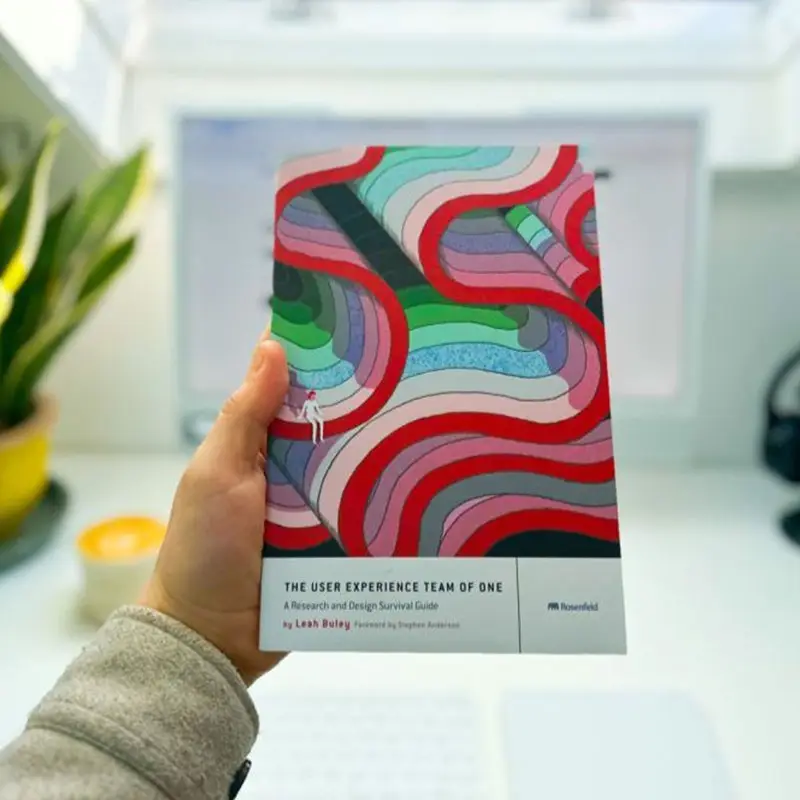Discovering “The User Experience Team of One: A Research and Design Survival Guide
Discovering The User Experience Team of One: A Deep Dive into UX Independence
When I first encountered The User Experience Team of One: A Research and Design Survival Guide, it immediately resonated with my journey as a UX professional. The idea of being the sole advocate for user experience within an organization seemed both daunting and invigorating. The book’s premise offered a lifeline to those of us who are passionate about UX but may not always have the luxury of a fully staffed team to lean on.
After completing the book, I can confidently say it’s a must-read for any UX practitioner navigating this path. It offers a comprehensive guide to single-handedly executing UX design and research, with a practical approach that is both strategic and empowering. Below, I highlight a few key chapters that had the most profound impact on my own UX practice.
Chapter 2: Guerilla UX Research – Quick, Effective Methods
One of the early highlights of the book is Chapter 2, which introduces the concept of guerilla UX research. This chapter really spoke to my need for rapid insights without the time or resources for extensive formal research. It outlines various techniques for gathering valuable user feedback quickly, from intercept interviews to ad-hoc usability tests. The takeaway here is that research doesn’t have to be complicated to be meaningful. These methods have already proven useful in my own work, helping me collect actionable insights in time-sensitive projects.
Chapter 5: Mastering Multiple Roles
Chapter 5 explores the complexity of juggling multiple responsibilities as a UX team of one. This is something I deal with on a regular basis—balancing research, design, prototyping, and stakeholder management. What I appreciated most about this chapter was its practical advice on time management and prioritization. The book doesn’t just acknowledge the struggle; it offers real strategies for making it work. For instance, adopting a flexible but disciplined workflow has been key for me, especially when dealing with overlapping deadlines.
Chapter 7: Building Buy-In with Data and Stories
One of the most impactful chapters was Chapter 7, which focuses on building stakeholder buy-in through a combination of data and storytelling. I’ve found this chapter especially useful when advocating for UX improvements to leadership. The book stresses the importance of not only presenting the numbers but also weaving them into a compelling narrative that connects with decision-makers. In an environment where resources are tight, getting this buy-in is essential for making UX a priority, and this chapter gave me the tools to do it more effectively.
Chapter 9: Scaling Your Influence
While the book primarily focuses on surviving and thriving as a lone UX professional, Chapter 9 shifts the narrative to long-term thinking. It delves into strategies for scaling your influence, even as a solo practitioner. This chapter challenged me to think beyond my immediate role and look for opportunities to embed UX thinking into the broader organizational culture. The idea of planting seeds for a UX-driven mindset across teams has been particularly motivating as I aim to create more lasting impact in my work.
Final Thoughts: A Roadmap for the UX Trailblazer
The User Experience Team of One is more than just a survival guide—it’s a powerful toolkit for anyone working to make a meaningful impact in UX, even with limited resources. Each chapter is packed with actionable advice, real-world examples, and strategies that are immediately applicable to the work I do daily. For those of us who find ourselves working solo in the UX space, this book is a reminder that one person can indeed make a difference.
I highly recommend it to anyone seeking to refine their approach to UX, whether you’re part of a larger team or going it alone. Its insights have already transformed the way I work, and I’m excited to continue applying these principles to future projects.
